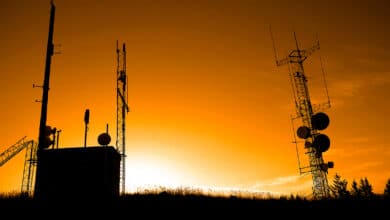
The 08.12.22 was supposed to be the test day of the new warning infrastructure in Germany. In the meantime, the first assessments of the success of the so-called warning day are available. Round it did not run.
Numerous cell phones shrill loudly
At 10:59 a.m., numerous cell phones in Germany shrilled loudly, vibrated in a strange way and could hardly be quieted. The reason was the first test of cell broadcasting to send a public warning. This involves sending an SMS-like message to all cell phones logged into a cell. According to initial reports, however, many cell phones remained silent, even though they run current operating systems and support cell broadcasting in principle. This is attributed to the fact that some radio cells were not accessible or did not send out a corresponding signal for reasons that have not yet been explained.
Vodafone, on the other hand, saw the cell broadcasting test as a complete success: “At the time of transmission at around 11 a.m., all mobile stations active in the Vodafone network reliably transmitted the warning signal to the terminals that were ready to receive it – across all network technologies (GSM, LTE, 5G). Thus, the test warning was delivered in an area where more than 99 percent of Germany’s population lives and works.” Vodafone also announced further optimizations until the start of regular operations next year.
Ralph Tiesler, President of the Federal Office of Civil Protection and Disaster Assistance, also sees the test of cell broadcasting in disaster control as a success. Although it is still too early to draw any conclusive conclusions, he said it is clear that cell broadcasting is reaching far more people than any other means of warning.
Telekom also pointed out that no overloading of the cellular network could be detected as a result of the mass broadcasting of the warning. This speaks in favor of cell broadcasting technology, as it means, for example, that emergency services can still be reached via mobile communications in the event of broad warnings.
Nina app overloaded
Much more unpleasant was the performance of the Nina app, which many people use to receive timely warnings of disasters in their immediate vicinity. For example, the app’s push message was received by many users; however, the warning itself could not be viewed in many cases. In addition, it was at times not possible to install the Nina app, which speaks for a clear overload of the systems behind it. The servers of the Federal Office of Civil Protection and Disaster Assistance were also briefly overloaded.
Infrastructure is robust
Overall, the Federal Office of Civil Protection and Disaster Assistance said that the technical infrastructure deployed was robust and that technical problems of the past had now been resolved. In 2023, the infrastructure is to be made available to all authorities issuing warnings and thus be used on a nationwide and regular basis. According to Tiesler, however, optimization will still take place until then: “The findings from this first nationwide trial of Cell Broadcast and the other warning means will now be incorporated into further development until the system is available to all warning authorities from 2023.”



